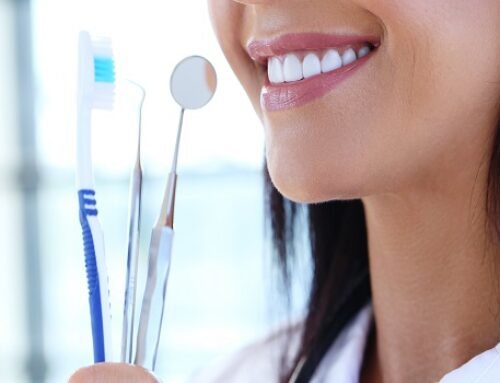Cosmetic dentistry is more popular than ever, with an increasing number of people seeking to improve or restore the appearance of their smiles. According to the American Academy of Cosmetic Dentistry, 99.7 percent of adults consider a smile to be an important social asset, with 74 percent believing that an unattractive smile can impede career success. Today’s cosmetic dental treatments may include a restorative component in some cases.
While it is important to see a dentist regularly to stay on top of any basic dental care, a professional dentist can also do the cosmetic dental operations that many people seek these days. Cosmetic dentistry is a form of professional oral treatment that focuses on making your teeth appear more attractive. And, while cosmetic dentistry operations are usually optional rather than mandatory, some treatment cases can have restorative benefits.
When you go to a cosmetic dentist for a procedure, they will thoroughly inspect your teeth and mouth to determine which operation will best improve the appearance of your teeth. Several cosmetic dental procedures can help you regain your confidence and a bright, enticing smile. Discover the most common procedures and how they operate.
Popular Cosmetic Procedures
Regular visits to a Dentist Farmington Hills are the best way to determine which expert will do the dental work you require. Routine oral exams help your general dentist detect potential concerns and, if necessary, refer you to a specialist.
- Teeth Whitening – Tooth whitening can be done in the office or at home, but it’s important to check with your dentist first to be assured your oral health is in good enough condition. They can advise you on the most appropriate in-office or over-the-counter bleaching process to achieve the desired results while keeping your oral best interest in mind. Another method of stain removal is through enamel abrasion. Surface stains are removed using fine pumice in a micro-abrasion machine. However, intrinsic stains, or stains on the inside of the tooth, are not treated by enamel abrasion.
- Dental Implants – A dental implant can anchor artificial teeth such as a crown, bridge, or denture by serving as the tooth’s root. The titanium device is surgically placed into the lost tooth’s jawbone. By acting as the tooth’s root, a dental implant can secure prosthetic teeth like crowns, bridges, and dentures.
- Dental Crowns – After the cosmetic dentist has prepped your tooth, crowns are custom-created to fit over the entire tooth. To endure biting pressure, they are commonly constructed of acrylic or porcelain that has been fused to metal. Crowns are used in aesthetic dentistry to fix teeth that are misshapen, damaged, cracked, chipped, or have big fillings, as well as to close gaps between teeth.
- Dental Veneers – Veneers are thin porcelain shells that cover the teeth’ front surfaces. They are a great option for patients with dark stains that won’t go away with whitening, as well as broken or shattered front teeth. An impression is taken after the enamel of your teeth has been lightly filed down. For custom veneers, the imprint is submitted to a dental laboratory. Until your permanent veneers arrive from the lab, you’ll have temporary veneers.
- Shaping – The dentist can modify the tooth by filing or removing some of the enamel, sometimes known as “enamel shaping.” This procedure is usually painless, has immediate results, and is appropriate for people who have crooked teeth, overly sharp teeth, or teeth that stick out more on one side than the other.
- Bonding – Dental bonding is an excellent option for individuals who have teeth that are significantly discolored or chipped. This treatment focuses on repairing decayed, broken, or discolored teeth with a substance that closely resembles the color of tooth enamel. Your dentist removes the decayed tooth, then applies the composite to the tooth’s surface, “sculpts” it into the desired shape, and cures it with a high-intensity laser.
- Invisalign or Braces – Adults and children can wear braces, which function by putting pressure on the teeth over time to correct their alignment. The pressure also changes the shape of the bone sockets where the teeth are located. Metal braces and clear plastic molds known as Invisalign are the most common means of teeth and jaw alignment. Your dentist may recommend one over the other depending on the severity of your problem.
Visit a Top Dentist in Farmington Hills
Though cosmetic dentistry is quite popular, some operations may not be covered by dental insurance or have a large out-of-pocket cost, which may influence your decision. Schedule an appointment by calling us at (248) 476-4416 with our Dentist in Farmington Hills and knowledgeable staff to discuss what you’d like to modify and which procedure is ideal for you.








